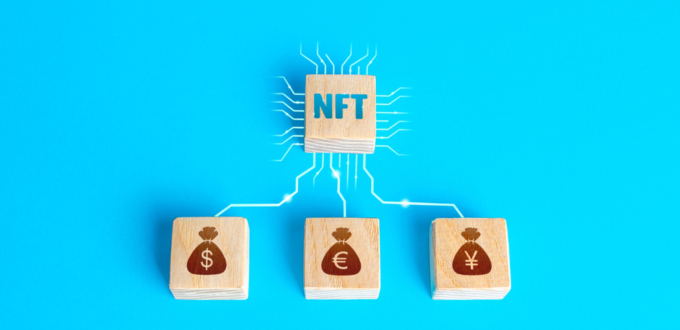Since the launch of Unified Payments Interface (UPI) in India (in 2016), India has seen a year-on-year growth of 50% in the volumes of cashless transactions1Mathew, J. K. and A. (2022, October 27). How India’s Central Bank helped spur a Digital Payments Boom. IMF. Retrieved February 7, 2023, from https://www.imf.org/en/News/Articles/2022/10/26/cf-how-indias-central-bank-helped-spur-a-digital-payments-boom. In the last financial year, the volume of the cashless transactions were reported to be approximately 5.86 billion Rupees. The amazing design of the UPI network and the ease of use, motivated citizens of India to adopt cashless transactions both in the urban and rural areas of India. However, the real spur in cashless transactions using UPI happened during the ‘Demonetization’, back in 2016.
A Glimpse of Demonetization Scenario in India and Its Role in the Adoption of Cashless Transaction
During demonetization, the Indian Government discontinued the legal tender status of the then-existing currency notes of Rs 500 and Rs 1000 and gave a time window for the citizens to deposit those currency notes in the bank and exchange it with the new currency notes. Since the new printed currency notes were not enough to replace the discontinued currency notes, cashless transactions had to be adopted to continue the trade and services in the market.
The impact of demonetization was so epic, that even the illiterate vendor selling goods on the roadside and the not-so-tech-savvy aged population, also learnt to transact cashless using digital payment wallets, backed by UPI technology.
Although it was quite a tough experience for the citizens of India, standing in long queues to exchange their old currency notes, the outcome in terms of cashless transaction adoption, seems to have worked out well for India and even the IMF has acknowledged the same2Mathew, J. K. and A. (2022, October 27). How India’s Central Bank helped spur a Digital Payments Boom. IMF. Retrieved February 7, 2023, from https://www.imf.org/en/News/Articles/2022/10/26/cf-how-indias-central-bank-helped-spur-a-digital-payments-boom.
Introduction of e-Rupee Central Bank Digital Currency (CBDC) in India
After the success of UPI adoption in India, it is time to take another leap, to further penetrate the habit of cashless transactions in India. India is currently working on its Central Bank Digital Currency called as e-Rupee which is being considered as an advanced financial ecosystem to facilitate cashless transactions in India.
The e-Rupee will work on a blockchain technology and will help in solving various financial issues that exist like:-
1. High printing cost of the currency notes.
2. Time intensive cross border payments.
3. Presence of counterfeit currency in the country leading to illegal activities and crime.
4. Not easy to trace the movement of money in the market.
5. High failure rates of banks leading to loss of depositor’s money.
6. Difficulty in passing on grants and subsidies to the beneficiaries.
The good news is that e-Rupee CBDC helps in solving all these problems listed above. For a detailed explanation on how the e-Rupee help in resolving the issues listed above, please refer to ‘if UPI is Already there in India is e-Rupee required?’
Adoption of the e-Rupee and Demonetization 2.0
Considering, that you are now aware of the importance of the e-Rupee for the Indian market, the next thought that comes to the mind is whether India will again announce the demonization of the existing currency notes in the market to adopt the use of the e-Rupee?
Note: – There is no official plan from the Government of India for demonetization 2.0 and the discussion done below is purely based on our thought process and analysis and may not exactly match with the plan of the government.
Let’s try to analyze both sides of the coin in our analysis below: –
Conservative Approach for Adoption of e-Rupee without Demonetization
Well, although demonetization did help India lead the world, in showcasing the early adoption of cashless transactions, however, it severely affected the MSMEs and Individuals. This slowed down the growth of the Indian economy starting in 2016 and it took at least two years to revive.
Considering the fact, that the world is again moving towards a slowdown, without creating any panic, a phase-wise removal of the existing currency notes from the market, with the help of the banks, seems to be a better deal. For example, the scarcity of Rs 2000 currency notes from the market is forcing individuals to use cashless transactions as carrying smaller denomination notes in huge quantities is not feasible3Where are the rs 2,000 notes gone? this RTI reply can give you the answer. The Economic Times. (n.d.). Retrieved February 7, 2023, from https://economictimes.indiatimes.com/news/new-updates/where-are-all-the-rs-2000-notes-gone-this-rti-reply-can-give-you-the-answer/articleshow/95392786.cms. In the absence of cash in the market, individuals and business owners shall again be forced to transfer e-Rupee from their bank account to their digital wallet and spend it to purchase goods and services or transfer it to their peers.
Since the currency notes are gradually phased out of circulation, the adoption of the e-Rupee shall be smooth and the features of retail e-Rupee CBDC will motivate and incentivize individuals to mass adopt it for carrying out day-to-day transactions, cashless.
Big Bang Approach for Adoption of e-Rupee with Demonization 2.0
While gradual adoption of the e-Rupee (as discussed above) seems to be one option that the government of India can adopt, the possibility for an announcement to demonetize the existing currency notes in the market can’t be ignored. A time window can thereby be assigned to deposit those in the bank account and exchange for e-Rupee by setting a cap initially on the amount that can be converted.
Well, this approach will definitely create a panic situation as it was created in 2016 and again affect small businesses, individuals and their families.
Conclusion
The Government of India can choose either to proceed with a gradual phased approach or go with a big bang and introduce the e-Rupee in the market, however, the likeliness to go with the gradual adoption approach looks more sensible. Considering the other countries, where similar CBDCs have been launched, for example, the Sand Dollar CBDC in the Bahamas, a gradual phased approach is being followed to let the citizens get used to the new financial system. Well, time shall tell the final approach that the Government of India will adopt, however, looking at the bigger picture, the e-Rupee is going to increase financial inclusion in society and hence improve the financial ecosystem.
References







